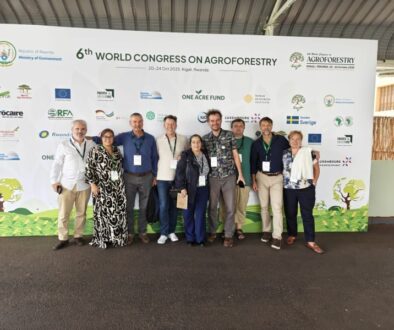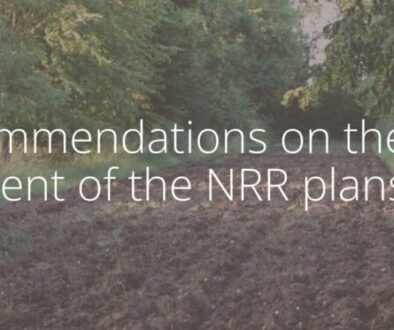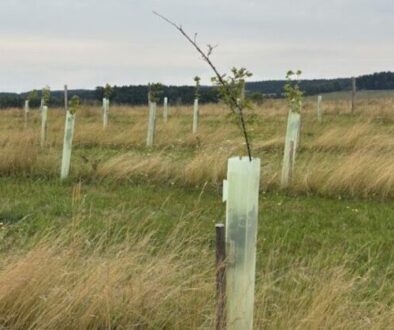Recent EURAF/DigitAF Policy Briefings
Recent EURAF/DigitAF Policy Briefings
The DigitAF Project has assisted EURAF to produce, or update, 14 Policy Briefings since the project´s launch on 1.7.22. The six most recent Briefings are:
- #25 Options for FAO reporting on Trees outside Forests (May 23)
- #26 Agroforestry and the 2040 AFOLU net-zero target (Jun 23)
- #27 Agroforestry and adaptation to climate change (Jul 23)
- #28 Agroforestry and the Sustainable Finance Initiative (Dec 23)
- #29 Agroforestry and permanent grassland definitions in EU Member States (Dec 23)
- #30 Agroforestry and “Forest Reproductive Material & New Genomic Techniques” Regulations (Dec 23)
The three final briefings are still in draft and comments are welcomed.
Briefing #25 was given to the FAO as an input to their review of monitoring and reporting methods for Trees Outside Forests in the five-yearly “Forest Resource Assessments”. We recommended greater coordination with the UNFCCC forest definition thresholds (i.e. the “Marrakesh Accords”) and the move towards “wall-to-wall” identification of forest-land, crop-land, grassland, wetland, settlement-land and other land” in national LULUCF inventories. The FAO should consider removing the minimum block-size (0.5ha) used in the categories of Other Wooded Land (OWL) and Other Land With Tree Cover (OLTC): since remote sensing techniques are increasingly available to estimate the crown area of individual trees, tree lines and small copses, irrespective of block-size. For the 2025 inventory, as an intermediate step, EU Member states should be encouraged to take OWL and OLTC categories more seriously than in their FRA-2000 returns, when many null-values were given.
Briefing #26 was a contribution to the EU DG CLIMA consultation on 2040 climate targets. It was suggested that the EU´s target of 3 billion additional trees by 2030, should be established at spacings of 200 stems/ha for silvoarable systems and 400 stems/ha for silvopastoral systems, as part of an urgent agroforestation programme starting in 2025. The area involved would give an average of 192 Mt CO2/yr carbon sequestration over the lifetime of the plantations, which is close to current levels of EU LULUCF net emissions (212 Mt CO2e in 2021). However, trees grow slowly when they are first planted and the potential contribution of agroforestry would be slow to develop. Taking a generic agroforestry plantation at 150 trees/ha, a rotation length of 30 years, and 1 million hectares planted per annum across Europe from 2025 to 2050: sequestration would be only 2 Mt CO2 in 2030, rising to 81 Mt in 2040 and 188 Mt CO2 in 2050. This scale of planting is thought to be economically feasible on most of the 169 million ha of agricultural land in the European Economic Area (EEA-39) with zero tree cover. All Member States were therefore urged to include agroforestation in the mid-term reviews of their CAP Strategic Plans, assisting them to meet national 2030 targets for net greenhouse gas emissions in the land sector.
Briefing #27 noted that agroforestry was mentioned in the Adaptation Strategies or Adaptation Plans of ONLY 11 EU Member States. This is despite extensive scientific literature on the use of agroforestry to help adapt agriculture and forestry to climate change. There is also a FAO guide on how to include both forestry and agroforestry in National Adaptation Plans. EURAF suggested that the Adaptation Plans of Czechia, France, Italy and Slovakia are examples of good practice. The Briefing gave a summary of the potential climate adaptation benefits of agroforestry measures in relation to i) improved carbon sequestration; ii) reduced soil erosion, increased fertility and resource use efficiency; iii) greater resistance to droughts and floods; iv) diversified landscapes and biodiversity; v) reduced pest and disease pressure; vi) maintained crop yields and animal welfare; vii) increased resilience to extreme events – including wildfires and storms; viii) improved economic diversity and benefits; and ix) reduced groundwater and air pollution.
Briefing #28 (draft until 15/12) focuses on the need for agroforestry to be recognised alongside forestry in the taxonomy of the EU Sustainable Finance Initiative. We recommend that “2.2 Agroforestry Establishment and Restoration” should be a sub-section in Annex 1 of the “Climate Delegated Act” (Regulation 2021/2139), within Section 2, “Environmental protection and restoration activities”, and alongside sub-section “2.1 Restoration of wetlands”. This recognises that agroforestry has not been mentioned in Section 1 (Forestry), or any of its subsections, and that the CAP Strategic Plan (Article 4) recognises that agroforestry should be defined by Member States as a component of “agricultural land”. Given the correct incentives, “agroforestation” can be a sustainable mechanism for farmers and landowners who wish to provide climate-mitigation or – adaptation, but who do not wish to change the legal status of their land to “forest” through “afforestation”. A description of agroforestry and possible technical screening criteria are provided, including: agroforestry plans, climate benefit analysis, guarantee of permanence, audit and group assessment.
Briefing #29 (draft until 23/12) focuses on implementation of new flexibility allowed to Member States in the definition of Permanent Grassland to “include other species such as trees and/or shrubs which produce animal feed”. This option has not been selected by 15 Member States (AT, BE-F, CZ, DK, EE, HU, HR, LT, LU, LV, MT, NL, PL, SK, SI). There are 4 countries which implement the new definition over all their territory, but only if “herbaceous vegetation remains predominant” (BG, DE, FI, FR), A further 8 countries implement it even when herbs are not predominant, but only when this is an “established local practice” (BE-W, CY, DE, FR, IT, PT,SE). Two further countries implement the option in some regions even when it is not an “established local practice” (CY, FR). Finally there are three countries where the option is implemented over the entire territory (EL, ES, IE). This is a very complicated picture, but it is important in the agroforestry context since it affects the eligibility of permanent grassland with trees for basic payments (BISS).
Briefing #30 (draft until 23/12) notes that the draft Regulation on “Forest Reproductive Material” fails to mention agroforestry. However, the need for quality-planting-stock is more acute for agroforestry than with conventional afforestation, since there is less opportunity for self-thinning and improvement-thinning. We suggest that: a) every mention of “afforestation/reforestation” (pages 2, 7, 18, 11, 12, 17, 19) is replaced by “afforestation/ reforestation/ agroforestation”; b) a definition (new bullet) of “agroforestation” should be provided in Article 3 Para 3 “´agroforestation´ means the establishment of high-quality trees on land which remains in agricultural use – for the purposes listed in Article 3 Para 1(a – f), and where a detailed definition of agroforestry is given in the CAP Strategic Plans of each Member State; c) Article 3 Para 1c should be reworded “restoration of forest and agroforest ecosystems”. EURAF also welcomes the provisions of the NGT Regulation, particularly when they are applied to the long list of diseases which are increasingly affecting European forests and agroforests.



